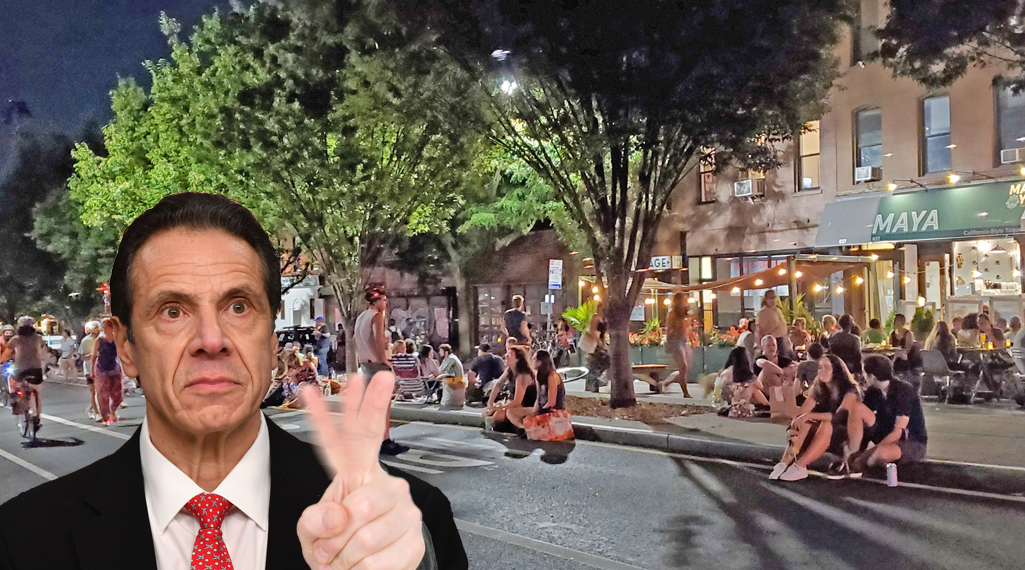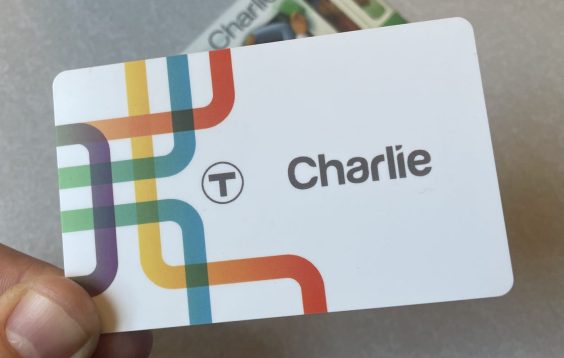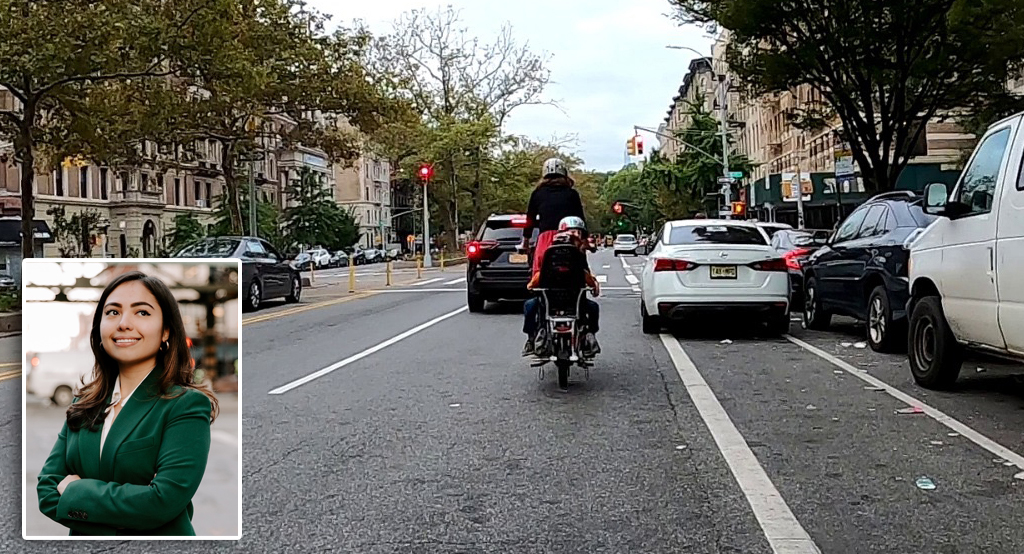The city's car-free open streets are funded for just one more year under Mayor Adams's proposed budget — but the current front-runner in the race to succeed him won't commit to the program.
City Hall last week announced $2.1 million in Fiscal Year 2026 funding for open streets, which Department of Transportation officials said "fully replaces" expiring federal pandemic funds that helped support the program until now. The proposal would effectively punt decisions about the future of the car-free spaces to 2026, by which point Adams, polls show, is likely to be the former mayor.
Ex-Gov. Andrew Cuomo, meanwhile, declined to commit to expanding the program — a pledge most other Democratic candidates have made eagerly.
Cuomo spokesperson Esther Jensen said open streets "will be reviewed on a case-by-case basis" if the former governor becomes mayor, echoing the current mayor's strategy of citing "community input" as a way of holding up transformative (and popular) street design changes.
"As with every policy that impacts New Yorkers, Gov. Cuomo's decisions will account for community feedback and will prioritize the safety and wellbeing of every citizen," Jensen said in a statement. "Gov. Cuomo is open to the continuation and expansion of the policy so long as data and community feedback support it."
The pandemic-era Open Streets program transforms blocks across the five boroughs into car-free plazas, but has contracted in recent years, with several popular locations cutting back operating hours due to budget constraints. In March, DOT officials told volunteers in a closed-door meeting that the program needed around $5 million to keep operating at its current capacity. Adams's budget secures the program's current funding levels for at least one more year, DOT rep Vincent Barone said. Officials also found $3.8 million to replace federal funding for the city's "Dining Out" outdoor dining program.
"With federal pandemic relief funding expiring, the Adams administration is stepping up to fully fund each of these cherished programs for the next year," Barone said in a statement.
The City Council still has to weigh in before the budget is final. Council Parks Committee Chair Shekar Krishnan (D-Queens), whose district includes the 34th Avenue open street, said the mayor should secure the program's future now.
"Given the attacks on New York City by the Trump administration, the Adams administration needs to do everything it can to fully fund our open streets program now to ensure future mayors don’t inherit a decimated program," Krishnan said in a statement.
Open streets groups say the program needs even more funding, however, asking for $48 million over three years. Volunteer organizers who spoke to Streetsblog this week bemoaned the difficulty of finding funding. The Vanderbilt Avenue open street, for example, recently cut its hours and launched a fundraiser to pay for new orange safety cones, Curbed reported.
Vanderbilt Avenue open street organizer Alex Morano said it took around 10 to 20 paid workers from The Horticulture Society of New York to set up street barriers this weekend — something he believes could be done cheaper if DOT put money into better, more permanent infrastructure.
"You can't just throw a couple of barriers into the street and call it a day," said Morano. The Vanderbilt open street, which cut back its hours this year from three days per week to one, has an annual budget of $60,000. The program cost $200,000 per season when it operated three days a week, Morano said.
Even the 34th Avenue Open Street, which has had more permanent infrastructure installed, struggles to fund programming crucial to the open streets concept — everything from social service fairs to cumbia dance classes.
"We're lucky that we've been able to raise money, but it's really, really hard," said Jim Burke of the 34th Avenue Open Streets Coalition. "We have all this programming. It doesn't cost much money, but it does cost money. It's infinitesimal for the DOT budget."
Despite the popularity of open streets, their footprint has shrunk since the height of the Covid pandemic, according to a recent analysis by Comptroller Brad Lander's office. While the total number of locations has remained at or above 200, the average length and average operating hours have dropped:

Lander, who is running for mayor, supports organizers' vision to grow the open streets program significantly, as do many of his competitors in the race to City Hall. All six Democrats who responded to Streetsblog's recent candidate survey — Lander, Zohran Mamdani, Zellnor Myrie, Jessica Ramos, Scott Stringer and Whitney Tilson — said they would fund and expand the program.
Two top candidates, Speaker Adams and Cuomo, did not participate in Streetsblog's survey. Reached for comment, Adams's mayoral campaign kicked Streetsblog to her Council office, where rep Mara Davis said the Council will take up the issue at its May 13 transportation budget hearing.
Advocates and volunteers will be angling for more money, not just any money. Under the mayor's budget, the program's future remains uncertain after 2026.
"Unfortunately, this feels too close to a token show of support and not at all adequate to what's needed," said Jackson Chabot, Director of Advocacy & Organizing for Open Plans, Streetsblog's parent organization.
"What's frustrating is that in the grand scheme of the city budget, we're talking pennies," Chabot added. "Why is it so difficult to get an adequate city investment when it's a program that centers people and public space?"






